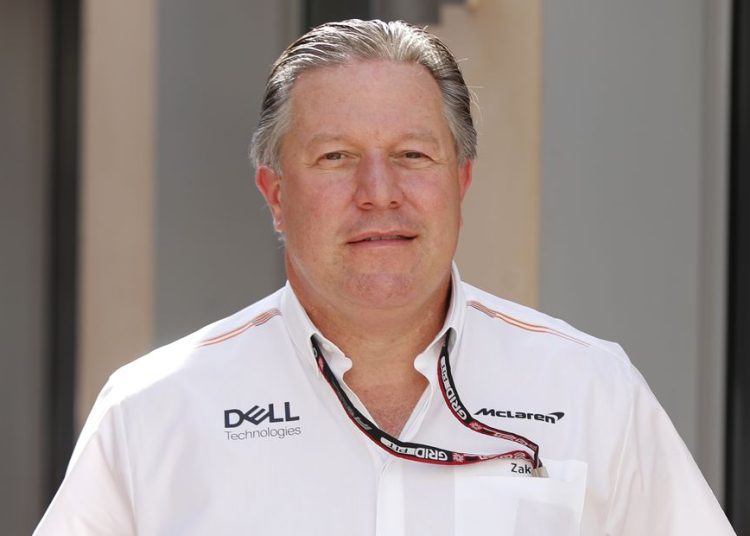F1: McLaren CEO Zak Brown provides a suggestion for a new F1 race calendar
While we all love Formula 1, is too much of it really a good thing?
Naturally, motorsport is one of the most popular sports around, with millions and millions of people regularly tuning in to watch each of the Grand Prix races that take place around the world to see the likes of Lewis Hamilton and Max Verstappen battle it out to be crowned the World Champion.
Indeed, many have also started to take a keen interest in the sport because of the betting opportunities that have been made available when they visit website OddsShark and enjoy the odds that have been created across a variety of different markets.
Of course, the sport has looked to capitalize on the interest that has been generated recently and has continued to add new races to the schedule to try and reach a number of different markets that they may have previously left untouched.
Recent news confirmed that there would be a race in Las Vegas from 2023, and the introduction of the bright lights of “Sin City” could mean that the race calendar could experience another increase and go to an all-time record high of 24 in a season. Indeed, the 23 that are planned to be raced this year is already a record.
Formula 1 boss Stefano Domenicali is strong of the opinion that the schedule is something that is manageable as he has revealed in the past that he believes there is a capacity to have a 30-race calendar in the future given the interest and appeal that the sport has around the world, however that seems to be something that many within the sport and competing at track level would perhaps disagree with.

McLaren CEO Zak Brown is just one of those that has been rather vocal about the situation and the demands that introducing new races can have, and has since made a suggestion of a way in which Formula 1 could still benefit, whilst also looking after racers and the teams that regularly compete.
As the health and well-being of the staff that works in F1 have been highlighted as a significant factor in why adding more races to the schedule could be too much of a good thing, Brown has suggested that some Grand Prixs to appear on a rotational basis, rather than being featured annually.
Indeed, with those involved in the actual race days that take place around the world, many of them are away from their families and on the road for much of the year, thus potentially having an impact on life at home where they may have families. Furthermore, the long days and the number of hours they regularly commit to ensuring the team is ready is another factor to have been highlighted, hence the calls to try and potentially limit the number of races that are held in a season.
In quotes that have been made by Brown, though, it does not seem that he wants to cut the calendar drastically, with him telling Reuters that he would actually like to see “something like 21 or 22 races” a year before providing a way in which it could be broken down.
“If you could wave a magic wand I’d like to see something like 21 or 22 races,” Brown said in an interview with Reuters.
“Seventeen or 18 as permanent fixtures and seven or eight that rotate because I do think to continue to grow the sport the more quality markets we can be in the better. I’d love to see us be in 30 markets but race 21 or 22 times a year.
“I think there are A markets and B markets that we race in. Maybe your B markets [should be] every other year.”
Naturally, this is something that could cause something of a headache for bosses at Formula 1, as they would want to try and keep everyone as happy as possible, while also not wanting to be in a position where they are being impacted financially.
They would have to try and come up with a way in which they would please each and every stakeholder involved, including event organizers, racetracks, and even the fans that they have in a certain destination. Furthermore, there could be certain risks attached to Brown’s idea with regard to labeling certain markets “A & B”.
Those that would be considered in the “A markets” would perhaps be the races that are already established, whilst those that are in the “B markets” would be the Grand Prixs that perhaps do not have the viewership that the F1 wants at this moment. However, these are the markets that provide the company the potential to grow the sport further, and this could be something that is seen to be rather difficult if they do not feature a Grand Prix in that location on a consistent basis.
